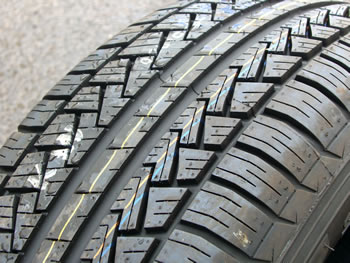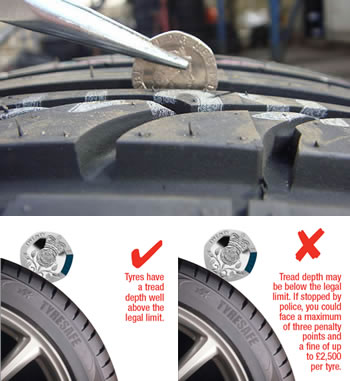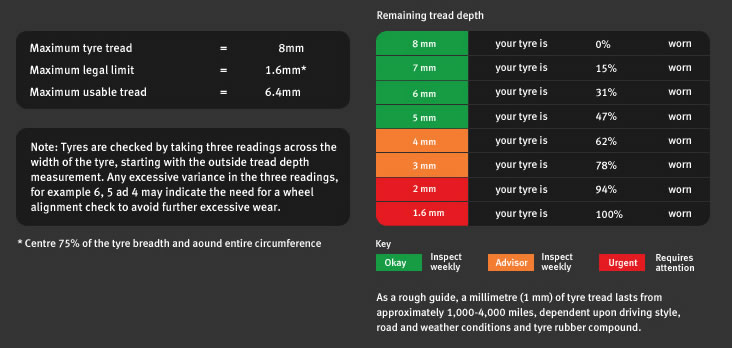Whenever you are driving – whatever the speed or conditions, your only contact with the road are your tyres. Your safety in acceleration, braking, steering and cornering, all depend on a small area of contact between the tyres and the road. It is therefore very important that your tyres are kept in good condition at all times.
Evidence show that almost half of all car accidents were caused when a car skids. Tyres are your vital link with the road and it pays to have them fitted by our professional fitters.
The Tyre Tread
The purpose of the tread on tyres is to allow the tyre to grip in the wet. Large volumes of water on the surface of the road have to be squeezed out by the tread grooves. For example, at 60mph, with a water depth of only 3mm, the tyre has to clear over 2 gallons of water per second. 3mm of water on a rainy day is not unusual. In rain puddles you’ll find often find as much as 8 to 10mm.
If this water is not rapidly dispersed, the tyre will begin to “aquaplane” – a sheet of water builds up between the tyre and the road – and the tyre loses all contact with the surface of the road.
This is extremely dangerous. The capacity to disperse water is drastically reduced with low and worn tread depth – so carefully monitor the depth of tread on your tyres – YOUR LIFE could depend on it.
How to measure tread depth
A simple and quick method to check the tread depth of your tyres is with a 20p coin. Simply insert the coin into the tread grooves at three different places on your tyre.
If you can see the outer rim of the 20p piece, then this can indicate that your tread is close to or below the legal minimum (1.6mm) and you should contact us to have your tyres checked. We recommend that you also perform a visual inspection of the condition of your tyres at the same time.
Another way to check tread wear is by the Tread Wear Indicators (T.W.I) which tyre manufacturers mould into the design of the tyre tread pattern usually at 1.6mm. These serve as a useful visual reminder to change your tyres. As soon as the tread is worn to the height of the tread wear indicator, the tyre has reached the legal minimum tread depth and you should replace the tyre as soon as possible.
If in any doubt, please contact us and one of our tyre technicians can check this for you.
Note: You should be aware that there are many different reasons for tyre wear. Your tyres don’t just get worn through age and use, but through emergency braking, under-inflation or over-inflation. Also if your wheels are misaligned, one edge of the tyre can wear more rapidly than the other edge.
Tread Measurements – Visual Health Check
The RoSPA (Royal Society for the Prevention of Accidents) recommend that for maximum safety that you change your tyres when the depth gets to 3mm.



